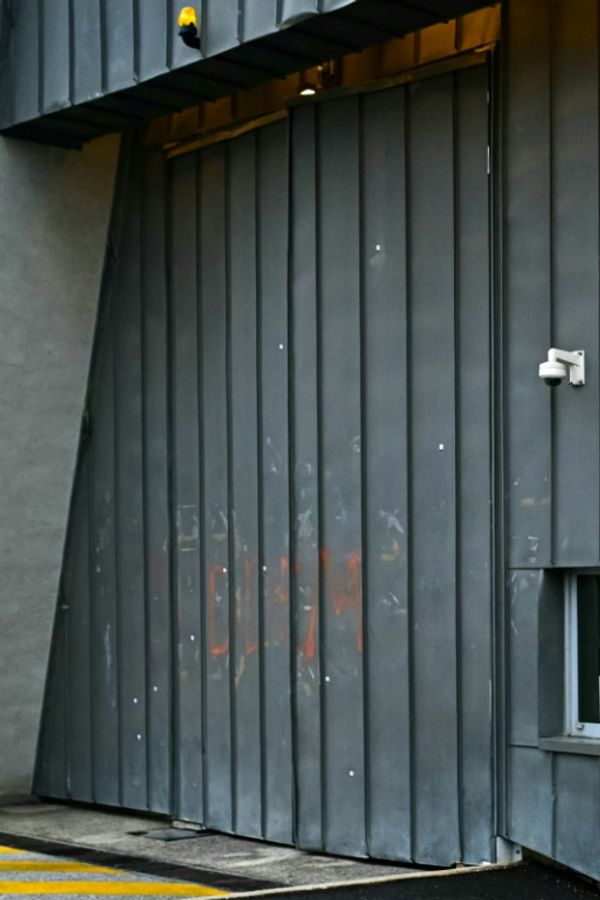For months Russia has claimed Ukrainian drones have been flying deep inside its territory.
And each report has placed them closer and closer to Moscow.
There was a drone wreckage found in a forest 80 kilometres south-east of the capital in February, which Russian authorities said was a failed attempt to strike a gas facility.
Then in April, three Ukrainian drones were allegedly found on separate occasions in a forest around 30km from Moscow.
The discoveries came shortly after Russian authorities reported the presence of a drone a mere 14km away.
In many of these instances, the Ukrainian drone allegedly involved was the UJ-22.
The same drone analysts say could have been used in this week's attack on the Kremlin.
Russia claims Wednesday's strike was "a planned terrorist attack" carried out by Kyiv, acting on US orders, with the aim to kill President Vladimir Putin.
Both sides have denied involvement.
Speculation continues to swirl, but when you look solely at the weapon, are Ukrainian drones capable of carrying out such an assassination?
UJ-22 won't 'pull down the Kremlin'
The UJ-22 Airborne, developed by the Ukrainian firm UKRJET, can on paper travel the distance.
The military-designed drone's maximum flight range extends up to 800km, so it can conduct long-range missions.
"Moscow is around 600km from the border, so it's definitely feasible," UNSW Canberra's future operations research group's Deane Baker said.
However, they are generally used for intelligence, surveillance and reconnaissance (ISR) and artillery spotting, rather than strike tasks.
"They are not particularly fast," Professor Baker told the ABC.
"And it would have to have been modified and retrofitted for that purpose."
The drone can carry up to four 82 mm mortar mines or four RPG-7 grenades.
The maximum payload is around 20 kilograms, which John Conway — air defence specialist and retired group captain — said was "pretty insignificant in the big scheme of things".
"It will create heat, light, noise, and excitement, but it's not going to pull down the Kremlin," he told the ABC.
However, if it was a Ukrainian drone strike, "it's quite a clever attack", he added.
"With a 20kg payload, you're not going to hurt too many people, and you're going to make some noise … it's much more psychologically based."
Based on the videos released of the attack, another drone that fits the profile is the Chinese Mugin-5, Samuel Bendett, a senior fellow at the Center for a New American Security in Washington DC, told Reuters.
"[It] can be basically purchased online and could be refitted into a military drone," he said.
"That drone can fly several hundred kilometres and it was used in previous attacks."
The Chinese-made drone is also slow moving, with top speeds of around 120 kilometres per hour.
Professor Baker said they were often referred to as the "Alibaba drone" because of the online platform where they are commonly purchased.
It is also an indicator that anyone can buy them.
"I'm not aware of any export markets for the UJ-22. So, if records show that it [the attack] was one of those, it would strongly point the finger at Ukraine," Professor Baker said.
However, he said, if Russia wanted to do a false flag with a Mugin-5, "that would be quite possible".
How could 'simple' drones get past air defences?
With a wingspan of 4.2 metres and a length of 3.7m, the UJ-22 is relatively small and only travels at maximum 160 kilometres per hour.
Professor Baker said it was likely flown at low altitudes to avoid certain radar systems, but given it sounds like "a flying lawnmower" it's unusual it wouldn't have been reported.
"It certainly does raise the question as to whether this was feasible, but it's not out of the realm of possibility," he said.
Bryden Spurling, senior research leader at RAND Europe, said drones like the UJ-22 are being shot down in the hundreds.
"That's the whole point. They're fairly cheap to replace," he told the ABC.
"The air defences around Moscow are naturally fairly deep, so it's curious how a drone like this one would have made it through undetected."
The US Institute for the Study of War (ISW) released an assessment of the incident, saying Russian authorities had recently taken steps to increase domestic air defence capabilities, including within Moscow itself.
"It is therefore extremely unlikely that two drones could have penetrated multiple layers of air defences and detonated or been shot down just over the heart of the Kremlin in a way that provided spectacular imagery caught nicely on camera," it said.
Would Ukraine bother?
Mr Spurling said the Ukrainians do have "some capability" to strike Moscow.
"It is likely within range of a few of their drones, but probably not at scale," he said.
"Which begs the question of what Ukraine would stand to gain from an attack of the size launched against the Kremlin."
Many analysts agree that if the drones were sent to Moscow by Ukraine, symbolism was a likely motive.
That it was more of a "messaging" operation to show it could penetrate defences in the Russian capital, rather than an attempt on the president's life.
"It's much more a propaganda exercise of taking the war to the Russian public in a very visible way," Mr Conway said.
"And what is probably also part of this is to expose — even to Putin — the fact that a simple, slow drone was able to fly through Russian air defences and hit the Kremlin."
The ISW assessment pointed to the incident's close proximity to Russia's May 9 Victory Day holiday.
It said Russia may use the strike on the Kremlin to justify either cancelling or limiting celebrations.
Mr Spurling said it was important to note that Ukraine had categorically denied involvement, which is not what it had done in the case of strikes in areas such as occupied Ukrainian territory.
"We assess it's just as possible this was a false flag attack by Russia seeking a narrative to justify its actions — or actions to come," he said.
"There has also been speculation it was the work of Russian dissidents.
"It's difficult to know for sure with the information in the public domain."







